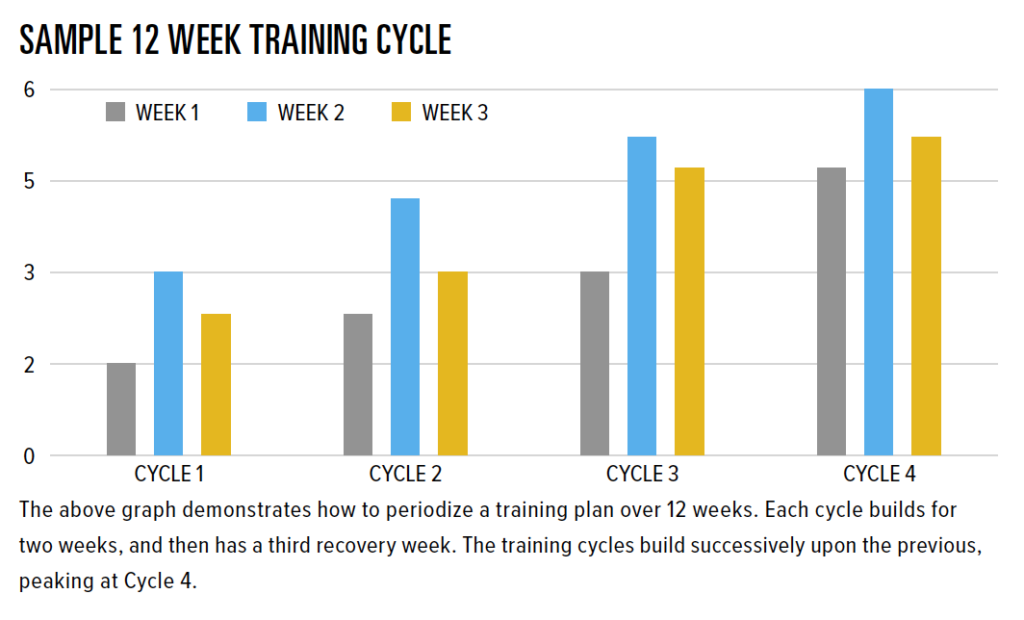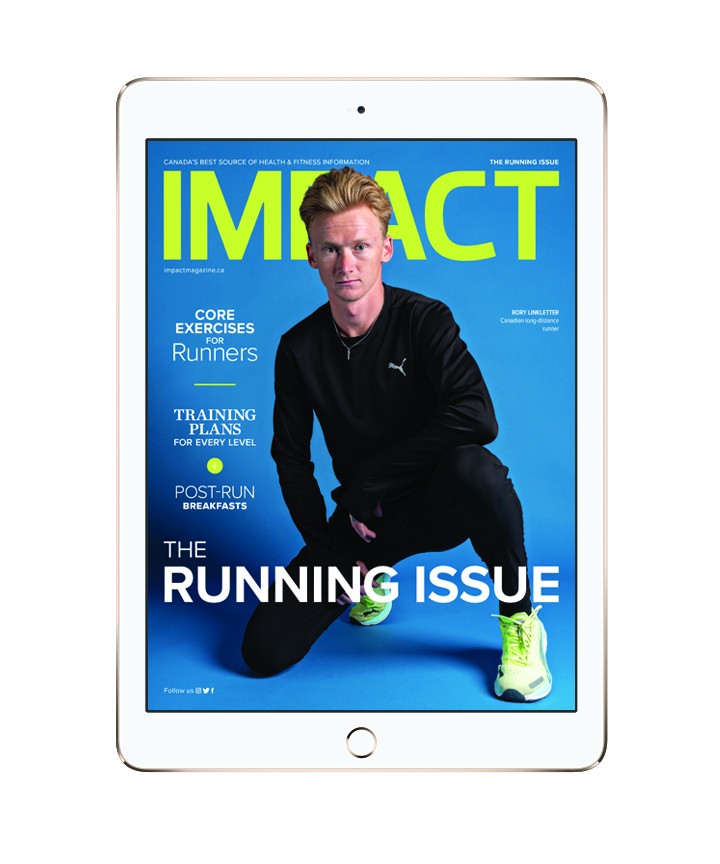
As a collegiate runner growing up in Montreal, we had distinct seasons that shaped a natural cycle for my periodized training program. The autumn focus was cross-country, followed by an early winter off-season, then strength-base building, transitioning into speed peaking again in the spring with track and finishing with another short down period. Summers were spent enjoying the local road running circuit. It was easy to map out the year following the seasons.
Since moving to British Columbia in 1998 and working as an endurance coach to local athletes, I was struck by the lack of a natural annual training cycle because of the mild climate. Everyone was training non-stop without a structured plan which left many of these athletes feeling burnt out, injured and stagnant.
I introduced my athletes to the concept of program periodization—a methodical approach—breaking training into segments or periods that maximize potential and the achievement of peak performance. Periodization and planning provide a broader picture of a yearly training plan, encouraging runners to select key events—rather than racing too frequently—perform their best and recover adequately.
Setting Goals and Planning
Before you kick off your race season, sit down and map out your year. Think ahead as to what your key races, goals or physical adventures will be. From there, break down your calendar into distinct phases/cycles. You will hear of terms applied to this type of planning such as macro, meso and micro cycling. These simply mean organizing for the long, intermediate, and short term. Start with a broad picture of your year, and then segment into yearly, quarterly, monthly, and weekly blocks of training. Factor in all your life demands such as work, school, family, trips, etc.
When periodizing your training, experiment with a variety of scheduling options. I find most people do well starting on a three-week plan that expands to six weeks, 12 weeks, 18 weeks and then 24 weeks. You can repeat this sequence to one year. Working on this three-week cycle is a strategy that is easy to manage from a scheduling perspective and also produces good results with fewer injuries.
Additionally, a longer build phase to plan for a key event allows for more wiggle room, taking into consideration life’s hiccups such as work, illness, and kids. For example, plan for six months to train for a marathon rather than three months.
There are many ways to slice up a training program and each person needs to find the best fit for them. Some athletes work well on a one-week build/one-week recovery cycle and some prefer to build for three weeks and recover for one. Find the secret sauce that works for you and experiment with different strategies.

Get Specific
Once your plan is laid out, dive into your specific race preparation program. Typically, the longer the race, the further ahead you will want to plan for your event date. Marathon runners should allow for at least a 24-week build, half-marathoners 18 weeks, and five-to-10 kilometre runners, a 12-week block.
Periodization has evolved since its inception and now most runners should blend a variety of training intensities into their entire program rather than have set phases that focus on one level, such as having a long base building segment where they run slow all the time, and then moving to the next phase and then adding speed. We have learned that the body responds better, and athletes have fewer injuries if their training includes some level of higher intensity at each training stage. Include a progressive build of intensity from the onset of your program. Choosing the types of intensity such as sustained tempo runs, short/fast intervals, and hill repeats will depend on the distance and terrain of your event.
Be methodical in your planning and progressively add training volume and intensity. Avoid adding more than 10 per cent of total distance or time to a given week. For example, if you are running three times a week for 60 minutes at each run, equalling a total of 180 minutes, do not increase by more than 18 minutes in the next week. These 18 minutes can be spread out as six minutes on each run or added to your long run. The third week of this smaller block will be an active recovery week where you drop both volume and intensity and include extra cross-training like biking, swimming, or hiking. After this decrease in training, your body will be ready to take on the next three-week cycle, gradually layering on more volume and intensity.
Plan For Downtime
Without a structured program, athletes often take downtime solely when injured, sick, or life gets too busy. When recovery times are planned the body is able to restore and adapt from the load at the previous training phase, and equally important, reap the psychological benefits of the rest by giving permission to train less.
After a peak event is completed, planning for an “off-season” or down-phase is critical for physical and psychological recovery. The recommended active recovery range for racing is approximately one day for every mile run.
Marathon = three to four weeks
Half-marathon = two weeks
10 kilometres = 10 days
5 kilometres = five days
I suggest athletes take a full one to two weeks off running after a marathon. For half-marathons, 10 km and 5 km races running can resume when muscle soreness subsides. Reduce both your volume and intensity, keeping most training sessions at an easy pace by cross-training and enjoying different activities to fully benefit from the running break. You will feel often more excited and energized to tackle your next goal.
All runners, regardless of experience, will benefit from periodization and program planning. Recreational exercisers and first-time runners should consider a structured approach to maintain consistency, reduce injuries, and run faster.
Photography by Jason Dam
You may also like: Incorporate Running Drills to Find Your Form

Read This Story in Our 2023 Running Issue
Featuring Rory Linkletter, Canadian long-distance runner. Add to your bucket list with the top Destination Marathons Around the World. Train for 10 km right up to a marathon – plus a 70.3 program. Increase your strength and work your core with Canada’s Top Fitness Trainers. Enjoy plant-based, post-run breakfasts and so much more.















